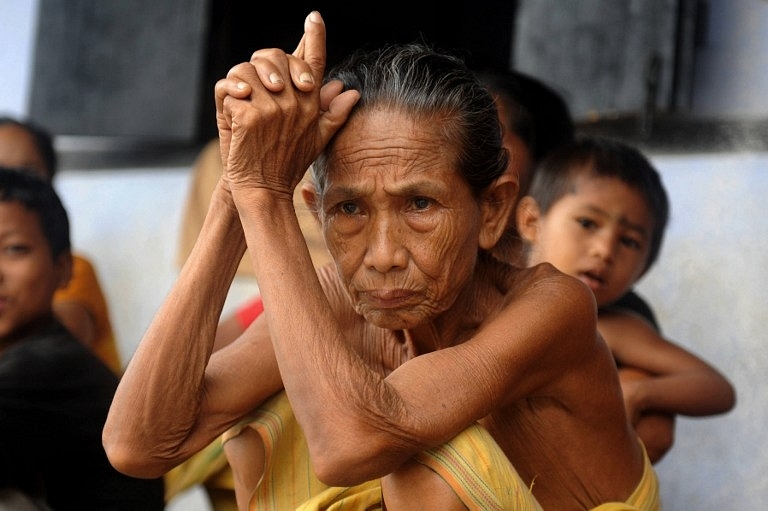Politics
Bloodbath in Assam - Is it Just The Tyranny of Distance?

Coverage in the popular media is a good measure of what a nation deems ‘nationally important’ or even ‘national’. What then, is the implication of the media’s meagre coverage of yesterday’s massacre?
55 people were killed yesterday in multiple attacks by Bodo terrorists in the Bodoland Territorial Autonomous Districts, Assam. The victims included women and children and the modus operandi of the terrorists was indiscriminate firing with AK-47 rifles. There are multiple reports which mention that the terrorists pulled people out of their homes and fired at them at point-blank range. The Union Home Minister is visiting the state today and the President and the Prime Minister had immediately sent out messages of strong condemnation.
Let us go over it again. In a part of India, terrorists, armed with AK-47s, dragged people out of their homes and murdered 55 people, including children. That is horrifying, and to put it crudely, important enough news to be run all day, and have reporters on ground. Again, 55 people were murdered with AK-47s. But do we see the urgency in the media which such an event calls for? Do we see a similar outrage as reserved for other, far less critical issues?
You know the answer as well as we do. What then, does one make of the reportage, or the lack of it? That only events in peninsular India and north India deserve minute-by-minute coverage? As sad and unfortunate as it may sound, the Peshawar school massacre was given more time and coverage by the media than yesterday’s attack in Assam. Also, experts believe that the Bodo problem has now taken the form of an ethnic conflict between Bodo Christians and Bangla-speaking Muslims. Given that, should one also read unease into the apathy of the media?
Coverage in the popular media is a good measure of what a nation deems ‘nationally important’ or even ‘national’. What then, is the implication of the media’s coverage of yesterday’s massacre?
It is also not the case that the Bodo problem is an unfamiliar one. Rather it is close to three decades old.
The Bodo issue first surfaced in the mid-80s when All-Bodo Students Union led a movement to demand a separate state of Bodoland to be created out of the territories of Assam. The movement has been violent ever since its inception. Since the mid-80s, non-Bodos have been the target of Bodo violence.
After a decade of militancy in the 90s, the Bodoland Territorial Council Accord was signed in February, 2003 between the government of Assam, the central government (then NDA) and, the Bodo Liberation Tigers. This led to the formation of the Bodoland Territorial Autonomous Districts (BTAD) to be governed by the Bodoland Territorial Council (BTC).
Even so, the National Democratic Front of Bodoland (Songbijit), led by I.K Songbijit, continued the armed struggle. The group remains the prime suspect for yesterday’s horrifying attack. This round of gruesome massacre occured in the background of reports of a possible peace accord between National Democratic Front of Bodoland (Progressive) and Union Home Ministry. NDFB (P) faction headed by Govinda Basumatary and Union Government interlocutors have been engaged in a protracted negotiations.
The Bodo issue has been festering for more than 4 decades now. Now, compare this with the coverage for the Telangana movement. Hypothetically, had a similar tragedy occurred in the Telangana struggle, would it not have received round-the-clock reporting?
Integration of the north-eastern regions and peoples in India is not only the responsibility of the state. At best, the state can ensure physical integration and can provide the institutions of government. If the Northeast has to be integrated in a comprehensive way, if the people from Northeast are to feel as important to India’s identity as people from any other region, then the responsibility for that must shared by the government, the civil society and the media. All three must ask themselves– are we up to it?
Support Swarajya's 50 Ground Reports Project & Sponsor A Story
Every general election Swarajya does a 50 ground reports project.
Aimed only at serious readers and those who appreciate the nuances of political undercurrents, the project provides a sense of India's electoral landscape. As you know, these reports are produced after considerable investment of travel, time and effort on the ground.
This time too we've kicked off the project in style and have covered over 30 constituencies already. If you're someone who appreciates such work and have enjoyed our coverage please consider sponsoring a ground report for just Rs 2999 to Rs 19,999 - it goes a long way in helping us produce more quality reportage.
You can also back this project by becoming a subscriber for as little as Rs 999 - so do click on this links and choose a plan that suits you and back us.
Click below to contribute.
Latest